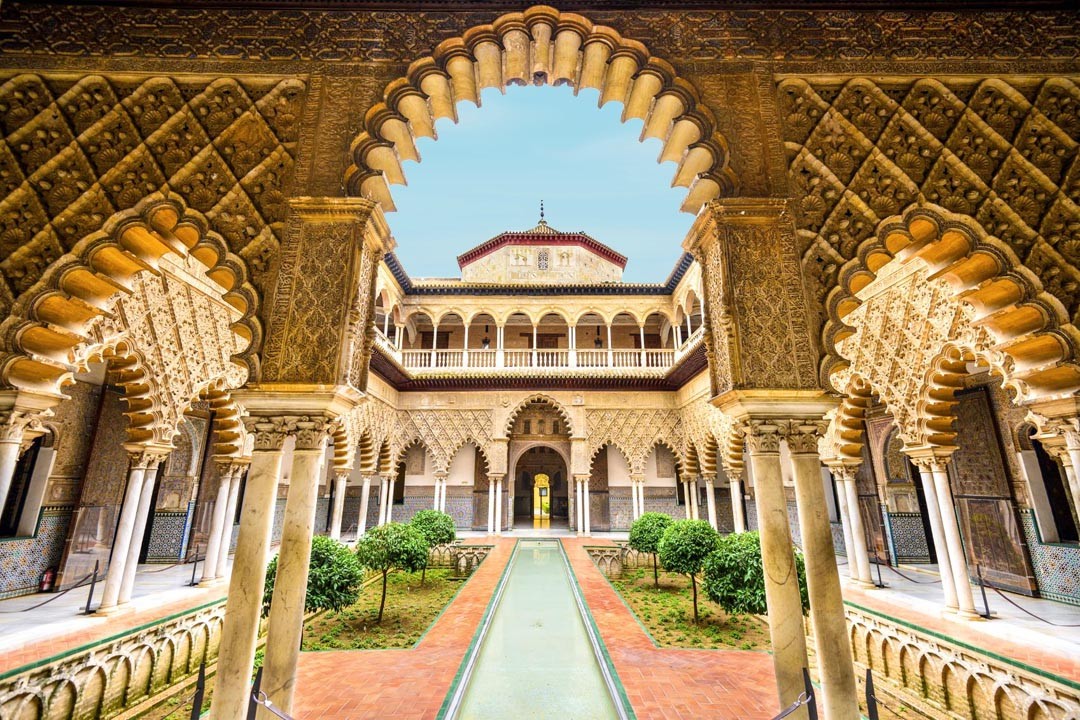Long before King Ferdinand II of Aragon and Queen Isabella I of Castile made Spain one whole kingdom in 1479, Seville had been occupied by several distinct civilizations from throughout the Mediterranean Area over the course of centuries. The diverse cultural and political legacies which they left behind have strongly impacted the unique and evocative identity which Seville has cultivated both as a city and as part of the modern nation-state of Spain. While I cannot hope to do the full story justice in a few hundred words, It is still my hope to weave the narrative of Seville’s pre-Spanish history into a beautiful enough weave to attract your eyes and interests in the city of today.
Seville began as an Iron Age settlement of Iberians whose access to a wealth of precious regional ores, alongside its strong trade connections with colonists from Phoenicia, Greece, and Carthage, let the settlement prosper over the long term (DK Publishing . Said prosperity partly incentivized the Romans to invade Spain, winning a strategic victory against the Carthaginians at the Battle of Alcalá del Río in 206 BC. (DK Publishing 39, 42) Six years later, the Romans took complete control of southern Spain; they changed the name of the Iberian settlement to Hispalis and established it as an administrative center of the province of Baetica (DK Publishing 42). In this capacity, the prosperity of Hispalis benefitted Rome and its empire for approximately seven centuries (DK Publishing 42-43).
In the early fifth century AD, Hispalis was taken by the Silingi Vandals and made their kingdom’s capital. Their rule lasted only a few decades, until the Visigoths captured and occupied Seville in 461 AD. Under their rule, Seville would become renowned for its resident evangelist, historian, and theologian, San Isidoro; his opus magnum, the Etymologies, an encyclopedia extolling the conjoined cultural legacies of Rome and the Catholic Church (DK Publishing 39, 42-43; Williams 55).
The Moors would conquer Seville in 711 AD, naming it Ixvillia. The ‘Abbadid, Almoravid and Almohad Dynasties would all witness and contribute to its successful continuation as a hub of trade and culture. The Almohads of the twelfth century took particular interest in Ixvillia, establishing the city as their capital and reinvesting its wealth into the construction of several new buildings. Their days of power and plenty, however, were very much numbered; Ixvillia was returned to Christendom by the host of Castilian King Ferdinand III in 1248 AD, briefly damaging its economy and resulting in the exile of its non-Christian denizens.
Castile would hold on to Seville for the remainder of the Medieval Period. Ferdinand III’s son, Alfonso X (1252-1284 AD), would conquer much of the rest of Andalusia during his reign. Further down the line, Pedro I (1350-1369 AD) enlisted Mudejares (Moorish craftsmen allowed to remain in Spain due to their talent) to construct a palace for him in 1364 AD; their finished work, the Reales Alcazares, bears the trademark Islamic influence of their architectural designs (DK Publishing 22, 46-47, 80-81).
Despite the heavy investment in these multicultural artworks by the Castilian royalty, the century leading up to the unification of Spain would be filled with attempts by that same royalty to assimilate Andalusia into the image of Castile and Leon. Firstly, starting with the construction of Seville Cathedral (1401-1501 AD) Gothic architectural designs began gaining more popular than those of Islamic cultures (DK Publishing 22, 47, 76-77). Secondly, the joint Portuguese-Castilian-Leonan victory against the invading North African Marinids at the Battle of Rio Salado (October 1340 AD) Resulted in nearby Seville’s increasing population of Christian European merchants who strengthened Castile’s networks of sea trade. Thirdly, social and economic upheavals in the fourteenth century led to nearly two centuries of scapegoating the local Jewish population; a devastating antisemitic riot erupted in 1391, and the Jewish Quarter was eventually emptied. The grisly climax to this social tension, however, did not come until Prior Alonso de Ojeda proposed the Spanish Inquisition to Queen Isabella I during her visit in 1477; with Seville as its first city of implementation, the lives of six conversos (Jewish converts to Christianity) accused of faking their conversions were claimed at the burning stake. Only twenty years after Ojeda’s proposal, as mentioned in the introduction, Isabella and her husband, Ferdinand, established the nation-state that is Spain today.

An Image of the Alcazar Real
Of course, the Seville’s history has continued over the following centuries into the present day, and its various cultural, social, political and economic identities are far livelier than those of the bygone civilizations who once occupied it. However, knowing what Seville once was to the peoples of the ancient and medieval worlds should only help us to better understand and appreciate what Seville is to our own. May you be inspired hereby to increase your understanding of this history at the source itself!
Works Cited:
DK Publishing. Seville and Anadalusia. First American ed., edited by Anna Streiffert et al., 1996.
Williams, Mark R. The Story of Spain: The Dramatic History of Europe’s Most Fascinating Country. 1990. First American ed., Golden Era Books, 2004.
